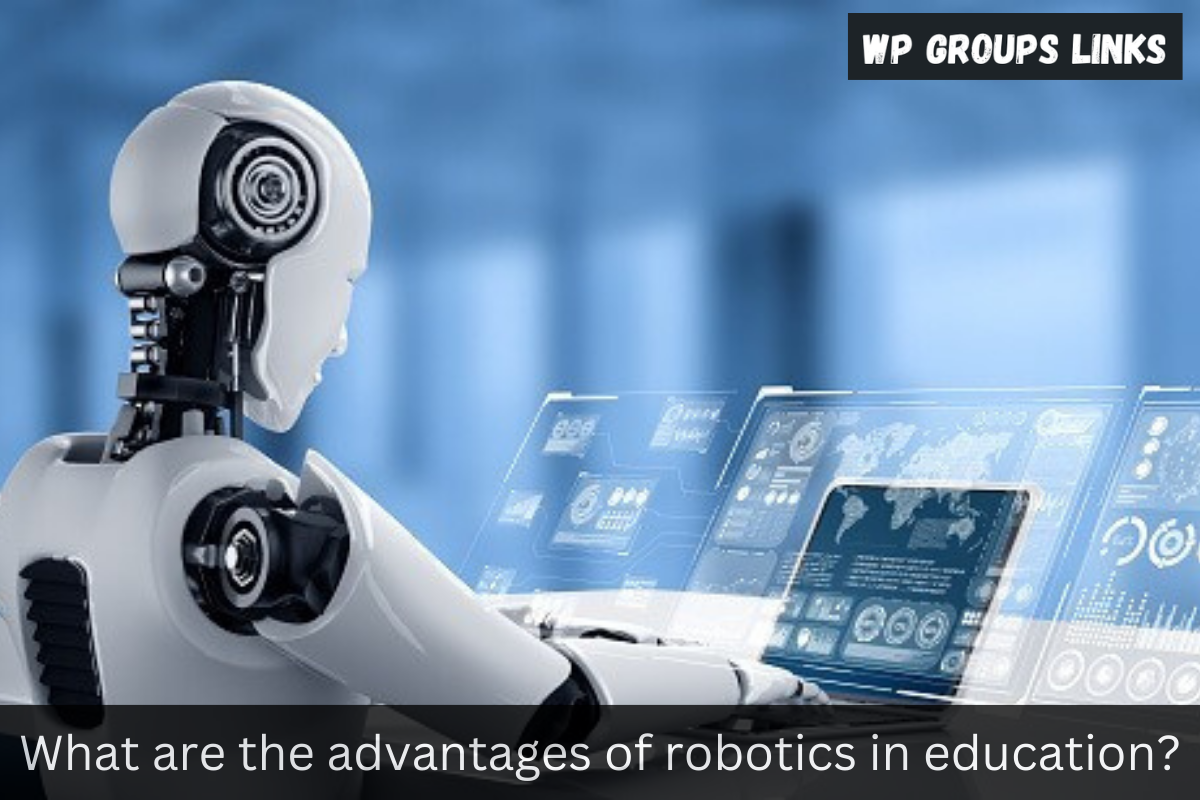Robotics in Education
Robotics in education has transcended its initial novelty to become a transformative force, enriching the learning experience for students and educators alike. As we delve into the advantages of incorporating robotics into educational settings, it becomes evident that these technological advancements are more than just tools—they are catalysts for a brighter, more inclusive future.
In a rapidly evolving technological landscape, the integration of robotics in education is a strategic move towards preparing students for the challenges of the 21st century. Robotics in education goes beyond the conventional classroom setup, offering a dynamic and engaging platform for knowledge acquisition.
Enhanced Learning Experience
Personalized Learning Paths
Educational robots, equipped with adaptive learning algorithms, tailor their interactions based on individual student progress. This personalized approach ensures that each learner receives content and challenges suited to their abilities, fostering a more effective learning journey.
Interactive and Immersive Education
Robotics introduces a hands-on, interactive dimension to education, creating immersive learning environments. Students actively engage with robots, translating theoretical knowledge into practical applications, enhancing comprehension and retention.
Skill Development
STEM Skills Emphasis
The integration of robotics emphasizes Science, Technology, Engineering, and Mathematics (STEM) skills. Students develop a strong foundation in these crucial areas, setting the stage for future careers in technology-driven industries.
Critical Thinking and Problem-Solving
Robotics challenges students to think critically and solve problems creatively. The process of programming and troubleshooting robots nurtures analytical skills, promoting a mindset of innovation and adaptability.
Accessibility and Inclusivity
Catering to Diverse Learning Styles
Robotic education caters to diverse learning styles, accommodating students with various strengths and preferences. Visual, auditory, and kinesthetic learners find a common ground where they can thrive and excel.
Bridging Educational Gaps
The inclusion of robotics in education helps bridge gaps in access to quality learning. Remote and underprivileged communities benefit from the scalability of robotic education, offering equal opportunities for all.
Cost-Efficiency and Scalability
Initial Investments vs. Long-term Benefits
While the initial investment in robotic technology may seem substantial, the long-term benefits far outweigh the costs. The scalability of robotic education allows for widespread implementation, reaching more students without exponentially increasing expenses.
Wider Reach and Impact
Educational robotics enables institutions to extend their reach, impacting students in rural and underserved areas. Virtual classrooms powered by robotics transcend geographical limitations, democratizing access to quality education.
Teacher Support and Collaboration
Complementing Human Instructors
Contrary to concerns about robots replacing teachers, educational robotics acts as a valuable tool that complements human instructors. Robots assist teachers in individualized instruction, allowing educators to focus on mentoring and guiding students.
Robotics as Teaching Assistants
Robotic teaching assistants can handle routine tasks, such as grading assignments and monitoring student progress. This frees up valuable time for teachers to engage with students on a deeper level, fostering meaningful connections.
Preparation for the Future Workforce
Aligning Education with Industry Needs
Educational robotics aligns academic curricula with the needs of the future workforce. By exposing students to technology and automation, they become better prepared for the demands of a highly digitized job market.
Fostering Innovation and Adaptability
The dynamic nature of robotics encourages a culture of innovation and adaptability. Students exposed to robotics learn to embrace change, preparing them to navigate evolving industries with confidence.
Case Studies
Successful Implementation Stories
Numerous educational institutions have successfully integrated robotics into their programs, reporting positive outcomes. Case studies highlight improved academic performance, increased interest in STEM subjects, and enhanced problem-solving abilities among students.
Positive Outcomes in Various Settings
From elementary schools to universities, the positive impact of robotics is evident across various educational settings. Students of all ages and backgrounds benefit from the diverse applications of robotic technology.
Challenges and Concerns
Ethical Considerations
As robotics in education expands, ethical considerations arise. Ensuring the responsible use of technology and safeguarding students’ privacy are crucial aspects that demand attention.
Addressing Technological Disparities
One challenge lies in addressing technological disparities among schools. Efforts must be made to bridge the gap, ensuring that all students, regardless of their location or socioeconomic status, have equal access to educational robotics.
Future Trends in Educational Robotics
Integration of AI in Education
The future of educational robotics involves a seamless integration of Artificial Intelligence (AI). AI-powered robots will provide even more personalized learning experiences, adapting to individual student needs in real-time.
Continuous Evolution and Advancements
Educational robotics will continue to evolve, incorporating cutting-edge technologies. As robotics becomes more sophisticated, its applications in education will expand, opening new possibilities for interactive and dynamic learning experiences.
Community Engagement and Robotics
Involvement of Parents and Local Communities
The success of educational robotics is enhanced when parents and local communities are actively involved. Collaborative efforts create a supportive ecosystem, reinforcing the benefits of robotic education beyond the classroom.
Building a Supportive Ecosystem
Communities can establish robotics clubs, workshops, and events, fostering a culture of learning and exploration. The collective effort of educators, parents, and community leaders contributes to a holistic and impactful educational experience.
Global Impact of Robotic Education
In the ever-evolving landscape of education, the global impact of robotic education is becoming increasingly significant. Beyond national borders, educational robotics is emerging as a powerful tool to bridge educational gaps and create a more equitable learning environment worldwide.
Educational disparities persist on a global scale, with varying access to quality education among different countries and regions. Robotic education presents a unique opportunity to address these gaps, offering a pathway to a more inclusive and interconnected educational landscape.
Bridging International Educational Gaps
One of the primary ways in which robotic education has a global impact is by bridging international educational gaps. Through the use of technology, students from different parts of the world can access the same educational resources and experiences. Virtual classrooms powered by robotics provide a platform for collaboration and knowledge-sharing, breaking down geographical barriers.
In countries with limited resources and educational infrastructure, robotic education offers a lifeline. Remote and underserved communities can benefit from the scalability of robotic technology, allowing for the dissemination of educational content to areas where traditional educational resources are scarce.
Cultural Adaptations and Considerations
The global impact of robotic education extends beyond simply providing access—it involves adapting educational content to diverse cultural contexts. Educational robots can be programmed to incorporate cultural nuances, ensuring that the learning experience is not only accessible but also culturally relevant.
By acknowledging and incorporating cultural diversity in educational robotics, students from different backgrounds can see themselves represented in the learning materials. This cultural inclusivity fosters a sense of belonging and relevance, making education a more engaging and meaningful experience for learners worldwide.
Collaborative Global Learning Experiences
Educational robotics facilitates collaborative global learning experiences, where students from different countries can work together on projects and share perspectives. This collaborative approach not only enhances the learning process but also promotes a global mindset among students.
Through virtual interactions and collaborative projects, students gain exposure to different cultures, perspectives, and problem-solving approaches. This interconnectedness prepares them for a globalized world, where cross-cultural communication and collaboration are essential skills.



